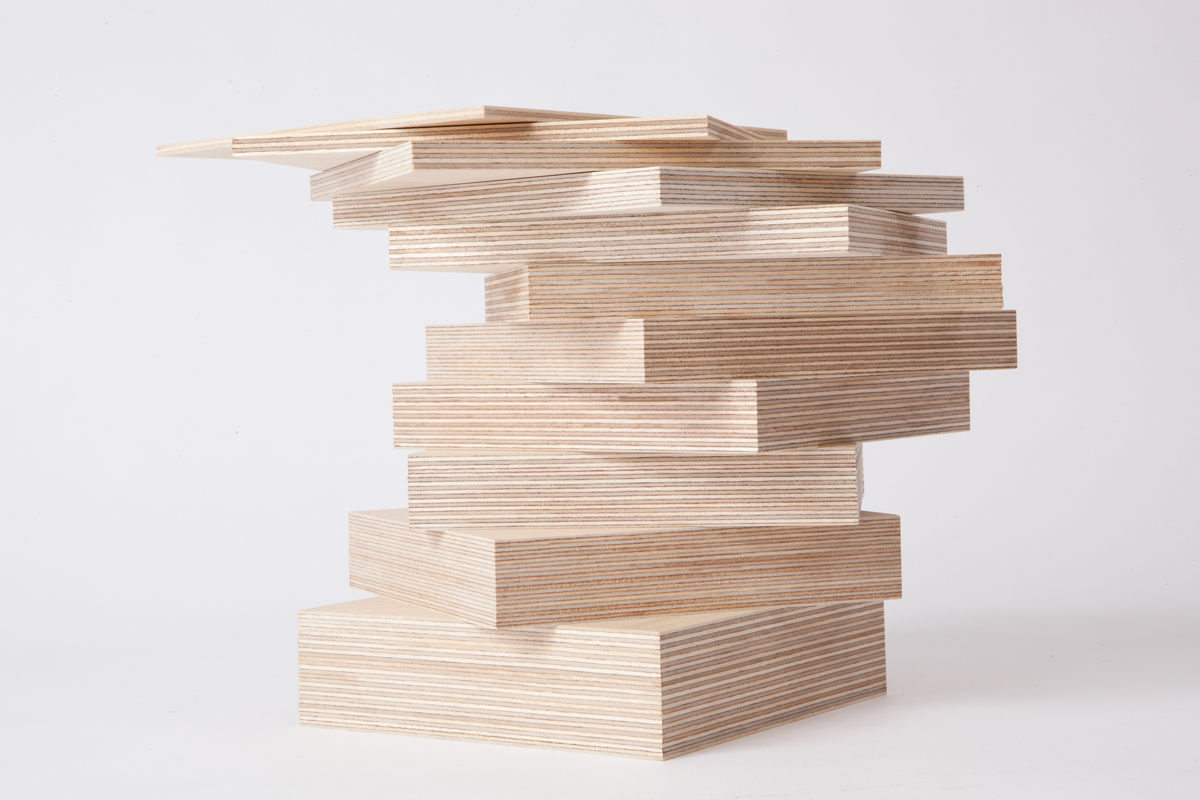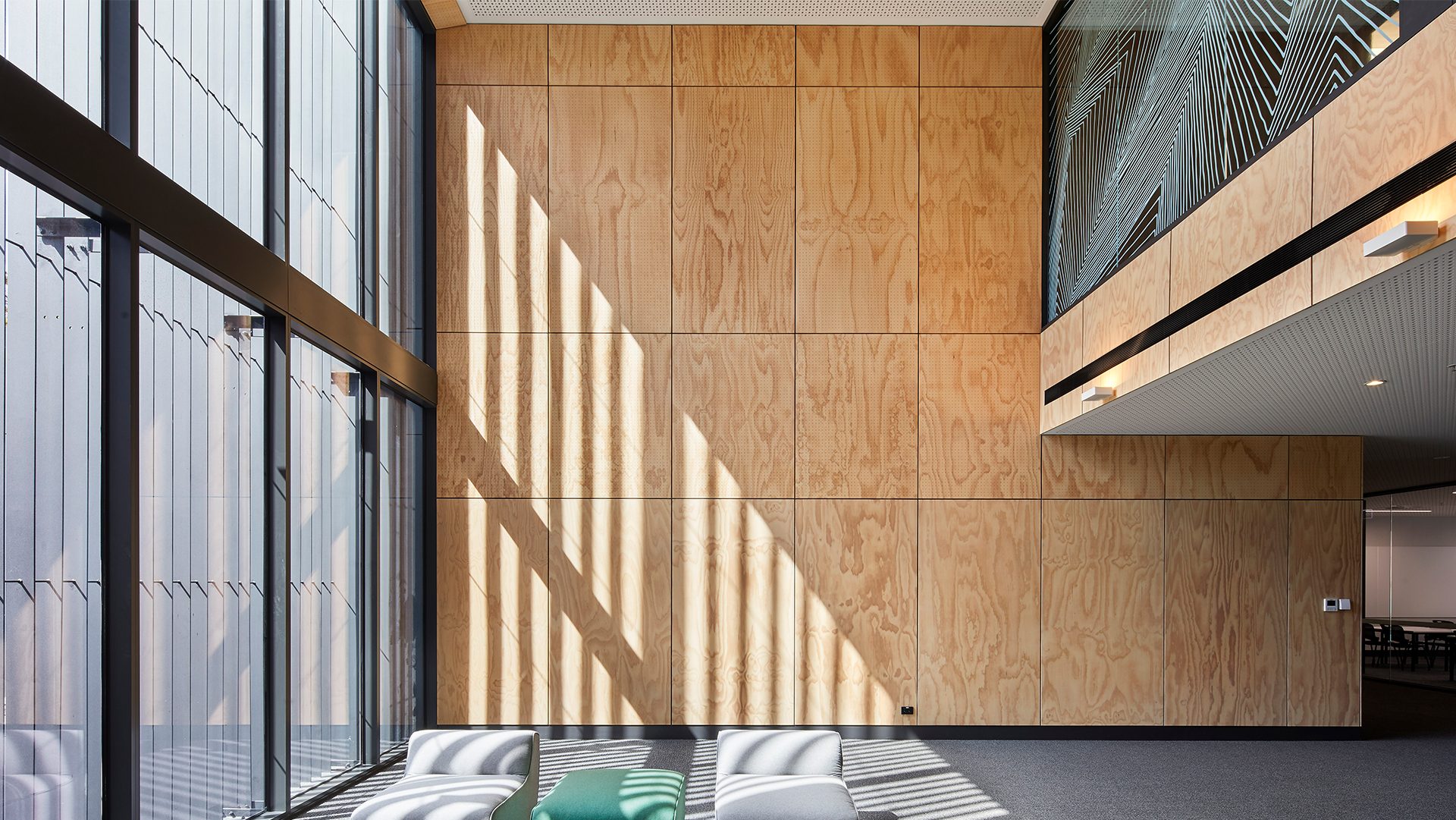28—03—2023
How to reuse and recycle plywood
If your interior is due for a revamp, and your existing plywood panels need to be removed to make way for the new design, you may be wondering … what are your options for disposing of the plywood?
The good news is, your plywood doesn’t need to be sent to landfill, as it can be reused or recycled.
As a composite timber product, plywood is made to last, and is highly suitable for reuse in a variety of ways. What’s more, untreated, unpainted and unstained plywood is categorised for recycling as Class B wood, which means it can be transformed into several alternative products.
So if you’re keen to learn more about reusing and recycling end of life ply, read on to learn our top tips to help you reduce waste and minimise your environmental impact.
How to reuse plywood
Your first option for plywood that is no longer needed is to give it a second life and reuse it for another purpose. This could involve selling the panels on as second-hand building materials for another person to utilise in an upcoming project. There are also many community groups and organisations that would appreciate plywood donations for use in their activities and work, including:
- Your local Men’s Shed group for use in their woodworking projects
- Environmental care groups to make nest boxes and animal shelters
- School and universities for use in their woodworking classes
- Organisations like Among the Trees who collect and resell reclaimed timber.
Alternatively, you may be able to turn your plywood into pieces of joinery such as cabinetry for use in your home or commercial space, or use it in ad hoc projects at home. There are lots of resources available online for budding DIYers to help you get inspired and start a creative project. The strength, durability and attractive look of plywood makes it the ideal material to craft many useful and decorative household items, from boxes to plant stands and plenty in between.
How to recycle plywood
While in days gone by the majority of end of life timber products were generally destined for landfill, today, improvements in technology and sorting processes at recycling plants have allowed for a much higher percentage of wood products to be recycled into something new. As mentioned, plywood falls into Class B for recycling, which allows it to be recycled in several ways.
First, it is shredded and purified from contaminants such as screws. It can then be turned into mulch or compost that is used for landscaping purposes or animal bedding. It can also be used for feedstock for the production of particleboard, and plywood can even be used to create biomass and biofuel, a renewable energy source that helps to reduce industry carbon emissions.
Give your old ply a new life
Whenever you choose to reuse your end of life plywood to create something new, or recycle it so it can be transformed into something useful, you are doing your bit to reduce waste and help the environment. So be sure to look closely at your options and avoid sending your used plywood to landfill wherever possible.
Talk to us about your project today
If you have an upcoming project, get in touch with our team to discuss your needs. We’re always happy to help!

28—03—2023
If your interior is due for a revamp, and your existing plywood panels need to be removed to make way for the new design, you may be wondering … what are your options for disposing of the plywood?
The good news is, your plywood doesn’t need to be sent to landfill, as it can be reused or recycled.
As a composite timber product, plywood is made to last, and is highly suitable for reuse in a variety of ways. What’s more, untreated, unpainted and unstained plywood is categorised for recycling as Class B wood, which means it can be transformed into several alternative products.
So if you’re keen to learn more about reusing and recycling end of life ply, read on to learn our top tips to help you reduce waste and minimise your environmental impact.
How to reuse plywood
Your first option for plywood that is no longer needed is to give it a second life and reuse it for another purpose. This could involve selling the panels on as second-hand building materials for another person to utilise in an upcoming project. There are also many community groups and organisations that would appreciate plywood donations for use in their activities and work, including:
- Your local Men’s Shed group for use in their woodworking projects
- Environmental care groups to make nest boxes and animal shelters
- School and universities for use in their woodworking classes
- Organisations like Among the Trees who collect and resell reclaimed timber.
Alternatively, you may be able to turn your plywood into pieces of joinery such as cabinetry for use in your home or commercial space, or use it in ad hoc projects at home. There are lots of resources available online for budding DIYers to help you get inspired and start a creative project. The strength, durability and attractive look of plywood makes it the ideal material to craft many useful and decorative household items, from boxes to plant stands and plenty in between.
How to recycle plywood
While in days gone by the majority of end of life timber products were generally destined for landfill, today, improvements in technology and sorting processes at recycling plants have allowed for a much higher percentage of wood products to be recycled into something new. As mentioned, plywood falls into Class B for recycling, which allows it to be recycled in several ways.
First, it is shredded and purified from contaminants such as screws. It can then be turned into mulch or compost that is used for landscaping purposes or animal bedding. It can also be used for feedstock for the production of particleboard, and plywood can even be used to create biomass and biofuel, a renewable energy source that helps to reduce industry carbon emissions.
Give your old ply a new life
Whenever you choose to reuse your end of life plywood to create something new, or recycle it so it can be transformed into something useful, you are doing your bit to reduce waste and help the environment. So be sure to look closely at your options and avoid sending your used plywood to landfill wherever possible.
Talk to us about your project today
If you have an upcoming project, get in touch with our team to discuss your needs. We’re always happy to help!







